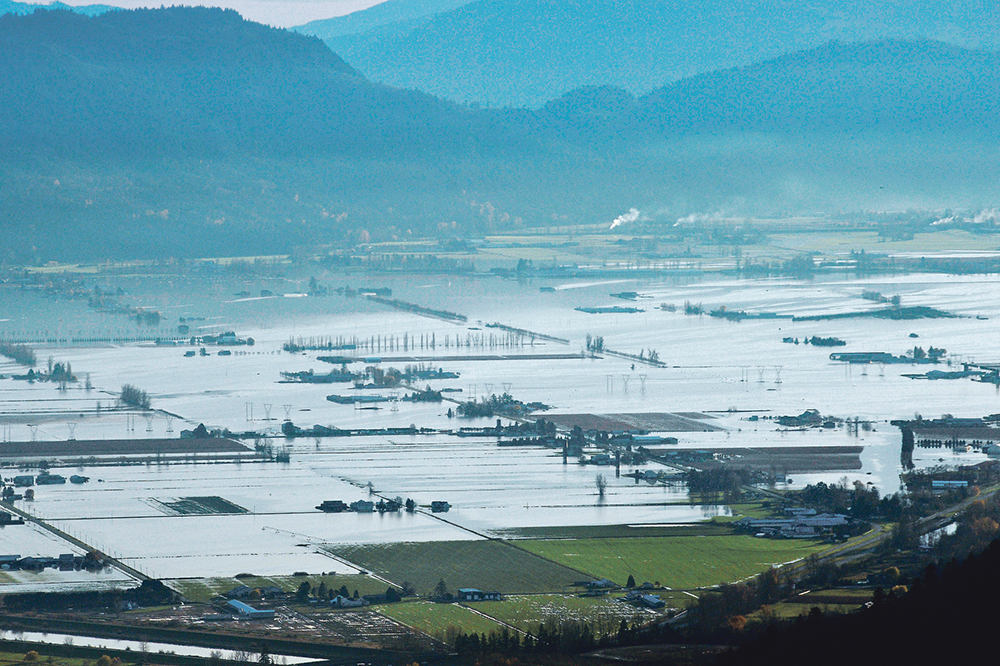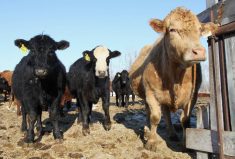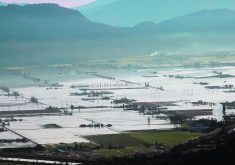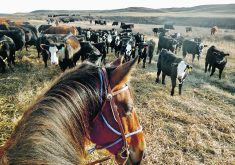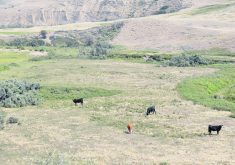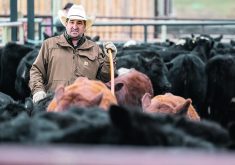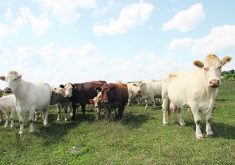British Columbia producers who are picking up the pieces following unprecedented flooding in 2021 can now collectively access up to $228 million under a federal-provincial disaster relief program.
The Canada-B.C. Flood Recovery for Food Security Program will help farmers with extraordinary expenses from uninsurable damages.
“The flooding and landslides resulted in the largest-ever agricultural disaster in B.C.’s history, and arguably one of the worst years ever for farming in our province,” B.C. agriculture minister Lana Popham said today during a news conference.
Read Also

Using artificial intelligence in agriculture starts with the right data
Good data is critical as the agriculture sector increasingly adopts new AI technology to drive efficiency, sustainability and trust across all levels of the value chain.
The overall damage sustained by farmers is likely about $285 million based on input from private insurance companies and assessors, she added. The program will help producers with expenses that include:
· Returning flood-impacted land and buildings to a safe environment for agricultural production, including cleanup, repair and restoration of land, barns and animal shelters, along with water and waste systems.
· Repair of uninsurable essential farm infrastructure, such as reasonable repair of on-farm structures such as livestock containment fences, the rental of temporary production facilities and drainage ditches and riprap.
· Costs for animal welfare, including replacement feed, livestock transportation, veterinary care and mortality disposal.
· Loss of perennial plants not raised for resale, such as blueberry plants.
Producers who have already undertaken work are being advised to take pictures documenting the damage and repairs to support their applications for funding. They should also keep receipts and track the hours of work.
Funding will be provided based on farm sales. Those with annual sales of more than $2 million will be eligible for up to 70 percent compensation through the federal-provincial AgriRecovery disaster relief framework, said a statement.
Those with less than $2 million in annual revenue can receive up to 90 percent compensation through the federal Disaster Financial Assistance Arrangements (DFAA), it added.
“The federal government has provisioned for $5 billion in 2021-22 for its share of recovery costs under the DFAA, as well as other costs related to the recent extreme weather events in British Columbia.”
When asked how long it will take for the compensation to be distributed among farmers, Popham said the answer was complicated.
“Every farm is going to be treated differently because every farm has its own circumstances, and so to be able to give a number on averages per farm, we don’t have that information yet,” she said.
“But we also know that there are some very desperate situations right now and farmers need cash now, and so we’re going to be able to give interim payment quickly and get that cash into their pockets so that they can start buying things like electrical supplies, etc.
“I do know that this has been a very trying time, and so with that in mind, we’re looking at the serious cases in front of us and making sure that those cheques roll out ASAP.”
The announcement marks the second time in six months that AgriRecovery has been triggered in B.C. Due to record-breaking heat waves and wildfires last summer, producers were eligible in September for up to $20 million through the Canada-British Columbia Wildfire and Drought AgriRecovery Initiative.
“Farmers are on the front lines of climate change,” said federal agriculture minister Marie-Claude Bibeau.
“This year, farmers have faced not only floods, but also wildfires and extreme heat, not to mention the ongoing pandemic.”
B.C. was forced to declare a state of emergency Nov. 17 following flooding and landslides that severed much of the province’s road and rail links. More than 1,100 farms were under evacuation order or alert at the height of the disaster, which affected about 37,000 acres of land and 2.5 million livestock from Sumas Prairie to Merritt and Princeton.
“Flooding in November was unlike anything any of us had ever seen before,” said Jeremy Dunn, general manager of the B.C. Dairy Association.
“When the waters receded in December, the mess left behind has been immense.”
Floodwaters contained everything from fuel and sewage to animal carcasses, causing the provincial government to start assessments on soil. It is particularly important because B.C.’s warmer climate means it is one of the first provinces to start growing crops each year, said Popham.
“We do know that there are some instances of contamination, and this recovery package will include assistance for that remediation of soil.”
Sixty-five dairy farms were directly affected by the disaster, said Dunn.
“Our farmers’ first concern was for their animals and ensuring their care, and the second was cleaning and rebuilding. That work continues today.”
Sumas Prairie in the Fraser Valley near Abbotsford was particularly hard hit because it is the site of a former lake drained to create farmland in the 1920s. About 628,000 poultry were reported dead in B.C. as of Dec. 2, along with 420 dairy cattle and about 12,000 hogs.
“Our dairy, poultry, poultry, beef and hog farms experienced serious losses of animals and infrastructure,” said Popham.
“And more than 7,500 tonnes of field vegetables were lost, as well as damages to many other crops, including berries, greens, plants and nurseries.”
She said the Canada-B.C. Flood Recovery for Food Security Program would not have been possible without input and support from many of the province’s producers and farm organizations.
“Developing a comprehensive response that would work for all of them was complicated, but together we feel that we have landed in a good place.”


